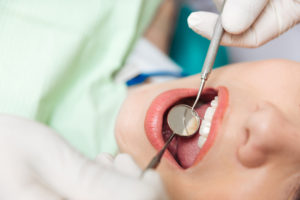Dental inlays are pre-molded fillings used for tooth restoration, typically used to repair dental cavities. They are made as a single piece to fit inside the tooth cavity and cemented into place. Inlays are generally made of a tooth-colored ceramic or porcelain material, or possibly a dental composite. Generally, dental inlays are used to restore cavities that are in the center of a tooth; this is only possibly when the cavity has not progressed into extensive tooth decay.
The process of getting a dental inlay is fairly straightforward. To prepare your tooth for an inlay, your dentist will numb the surrounding area with a local anesthetic. The dentist will then drill into the affected tooth to clean out the decay within the tooth. Your dentist will then take an impression of the top crevice area of the tooth and send the impression to a lab for fabrication of the inlay. Once the inlay has been created, you will need to return to the dentist to have the inlay placed.
Dental inlays are generally used to repair a tooth with decay that has not affected the cusps of the tooth, or the tooth’s pointed features. If the cusps are decayed or damaged, a dental inlay is not a viable option for restoring the tooth. A dental inlay can also be used when the tooth has experienced extensive damage that will require a large dental filling, which could possibly weaken the remaining structure of the tooth. Lastly, a dental inlay may be used for a tooth that needs help in supporting the mounting of a crown.
The two days after having a dental inlay are critical. You will need to avoid drinks and foods that are of extreme temperatures, or foods that are hard or sticky. You will want to consume soft foods to allow your mouth to rest. Your mouth may be numb and sore in the affected area. You may want to take it easy with your oral care routine, and avoid rigorous brushing until the area has fully healed.
















